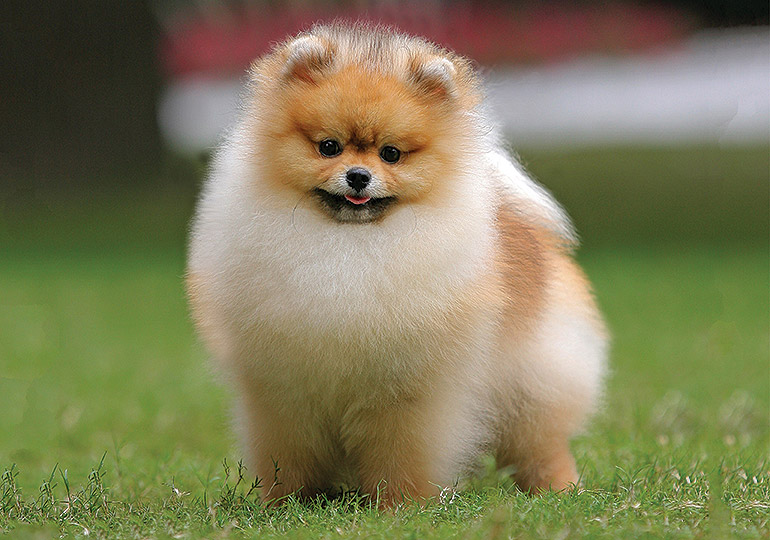
GROUP 1 - TOYS
The Pomeranian is a member of the Spitz family. Descended from the larger Spitz dogs, specifically the German Spitz, the name Pomeranian originated from Pomerania in Central Europe, which is today part of Northern Poland and Eastern Germany. Although not the origin of the breed, this area was credited to the breeding, which led to the original Pomeranian. Proper documentation was lacking until the breed’s introduction into the United Kingdom.
Queen Charlotte, wife of King George III brought to England two specimens of the breed from her native Pomerania in Germany in 1767. They weighed between 30-35 pounds.
In 1888 Queen Victoria, Queen Charlotte’s granddaughter, obtained a small red sable Pomeranian named Marco, who weighed about 12 pounds. During Queen Victoria’s lifetime the size of the breed decreased by 50%, and today they weigh between 2-2 ½ kilos. Pomeranians are members of the Toy Group, due to their small size and the breed was recognised by the English Kennel Club in 1890.
A very playful, friendly and lively dog, who love to be around their owners and are very protective of them. Pomeranians are quite alert and sensitive to changes in their environment and can be slightly noisy, if allowed to bark unchecked at strange noises.
The breed is very intelligent, responds well to training, but also has a way of getting what they want. The Pomeranian is an extroverted little dog, who loves being the centre of attention and gives unconditional love to his owners.
The Pomeranian is a compact, short coupled dog with a thick double coat, harsh to the touch. The tail is characteristic of the breed, set high and carried straight over the back. Ears should be small and set high on the head and the eyes should be small and oval (or almond shaped) while the muzzle should be wedge shaped. Expression is “foxy,” meaning alert and fox like.
Brushing twice weekly with a soft slicker brush will keep the Pomeranian free of knots and tangles, paying particular attention to behind the ears, under the armpits and between the back legs. Ears must be cleaned weekly and toenails clipped. Eyes should also be regularly wiped with a soft, wet flannel.
Bathing is recommended monthly to keep your dog fresh and clean. When shedding (dogs yearly and bitches twice yearly) it is recommended to comb out the shedding undercoat with a swivel tooth comb.
The life expectancy of a Pomeranian is 12 to 16 years. Luxating Patella, collapsing Trachea and Alopecia X or Black Skin disease (a genetic skin condition), are the most common health problems in the Pomeranian. Those aside, a well bred Pomeranian on a good diet with appropriate exercise will have few health issues.
Pomeranians are ideal companions, enjoying outings and being a part of the family. They are extremely intelligent, loyal and love to please, making them very good at Obedience. Unfortunately they are not a dog for small children and should not be encouraged to jump on furniture due to their small size. They are suitable for apartment living and the elderly, as they do not require a great amount of exercise.
Words: Elizabeth Friedman, on behalf of the Pomeranian Club of NSW (2016)
Image: Shutterstock.com
Now you know a little about the Pomeranian, you may think that this is the dog for you. Before you make a decision, please make contact with the breed club or your State controlling body for purebred dogs. They will be able to give you information about available puppies and also suggest dog shows where you can see the breed and speak to breeders. In this way you will gain a better perspective of the Pomeranian and its needs, and whether this breed would suit your lifestyle.